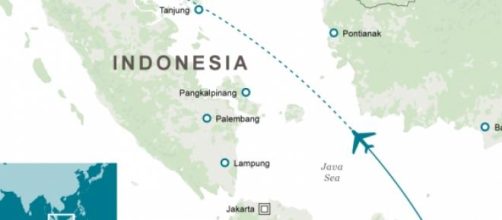Hypotheses of what may have happened to Air Asia 8501
Weather may have beenthe main factor causing the tragedy. Inthe majority of aviation accidents, many have cited, from fog to thunderstormsas a main contributory factor.
Disappearance of anAir France Airbus A330 off the coast of Brazil in 2009.
Quote: “Analogous to what happened five-years ago with AirFrance flight AF447 back in 2009, which tumbled into similar ice crystal-likeinter-tropical convergence storms, while cruising over the Atlantic Ocean offthe coast of Brazil, at higher altitudes there is a much higher probability ofengine stall, primarily due to less oxygen in the air alongside varyingtemperature distribution affecting engine power during highly turbulenttropical storms.
-Prof McGee”.
Note: Large partsof South East Asia has beeninundated with floods during which isnow the monsoon season, that usually sees heavy rainfall and strong winds annually , but seasonal monsoon has been the worst in the past 30 years . Causingwidespread heavy flooding in parts of Thailand, Indonesia and Malaysia in thepast week. Flood waters in Malaysia submerging partially whole towns andvillages displacing 200,000 plus victims.
( Prof.Oliver McGee, former deputy assistanttransportation secretary during Bill Clinton’s administration and a current professor at Howard University inWashington DC.
The Professor continued in his opinion piece on the Air Asiacrash.
• A large area of disturbed weather, including areas ofintense thunderstorms with cloud tops that reached or exceeded the Air Asiaflight's cruising altitude, were likely in the vicinity of the plane when itdisappeared.
Quote: The flight'spilot requested a turn to avoid bad weather ahead of the plane, which is a standardprocedure for when flights encounter bad weather and turbulence.
Opinion: There weresupposedly highly turbulent black storm cells seen in part of a weather map ofthe region. Such black cells can reach very high altitudes in the range ofairliner cruise, and could feature heavy winds and lightning with large hailstones that could possibility be injected into the aircraft engines likebullets, causing foreign object damage and high cycle fatigue failure of engineparts during the tragic moments of flight QZ8501.
Moreover, such tropical storm conditions shown may have also supposedly caused distortion ofair flow inside the engine intake that may have in all probability inducedengine stall, thus allegedly causing flight QZ8501's Airbus A320 airliner toliterally fall out of the sky into the Java Sea off the coast of Indonesia. “Endquote.
2 Theories ofAviation Expert analyst.
ON THE EDGE OF LOGIC': QZ8501 behaved like a 'fighter jet' -rising & plunging almost vertically
Indonesian aviation analyst Gerry Soejatman after he hadexamined figures leaked from the official air crash investigation team is ofthe opinion that the aircraft rose up as fast as a fighter jet and then droppedback into the ocean almost vertically into the water. Suggesting that the crew mayhave lost control of the Airbus 320-200 after encountering highly extremeweather conditions.
He said “It’s really hard to comprehend [the plane acted ina way] bordering on the edge of logic,” as it plunged into the water “‘like apiece of metal being thrown down.”
Mr.
Soejatman theorized that the aircraft was caught in asevere updraft, followed by an equally severe ground draft that could havecaused the crash. Basing his theory on the leaked figures which shows the planeto have been climbing at a staggering rate of 6000ft to 9000ft per minute.
The aircraft then fell at 11,000ft a minute, with bursts ofup to 24,000ft – in marked contrast to regular circumstances, when a planewould climb between 1000ft to 1500ft on a sustained basis, gaining 3000ft in aburst.
“You can’t do that at altitude in an Airbus 320 with pilotaction,” he argued.
In a contrasting analysis, Peter Marosszeky, an aviation expertfrom the University of NSW, opined to Sydney Morning Herald that the aircraftseem to have descended at an extremely low speed, as low as 61 knots, which maybe suggestive that the aircraft seem to be almost heading straight down.
And may explain why the plane and crash site was found inwater just 10km from its last point of radar contact.
In surmising , Mr. Marosszeky posed that a climb rate of at least 6000ft a minute “ which is usually in therate of climb domain for fighter jets “ and for a commercial aircraft to do so, may be indicative of a “severe weatherevent .
'NO VICTIM HAS BEENFOUND WEARING A LIFE JACKET', OFFICIAL SAYS
Finally, does this suggest that the victims had no time toreact, if something violent did happen to the plane mid-flight, the crew and passengerstrapped in the fuselage will be like riding a horrifying roller coaster ride, unableto do anything?
Still until the wreckage is recovered, all theories orconjectures remain just that

